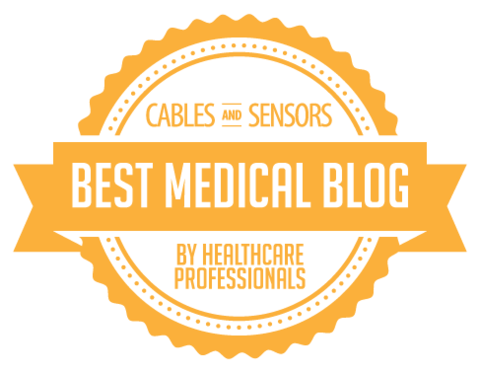Weight Lifting and Blood Pressure – How does weight lifting impact blood pressure?
 Lifting weights can cause a temporary, but dramatic blood pressure rise. Systolic blood pressure can increase up to 350-400 mm Hg and diastolic blood pressure to 150 mm Hg even if your blood pressure is typically a healthy level of 120/80 or less.
Lifting weights can cause a temporary, but dramatic blood pressure rise. Systolic blood pressure can increase up to 350-400 mm Hg and diastolic blood pressure to 150 mm Hg even if your blood pressure is typically a healthy level of 120/80 or less.
Long-term high blood pressure is linked to arterial endothelial dysfunction. The endothelium is the inner lining of your artery walls. Endothelial dysfunction can result in the hardening of artery walls. Researchers have been monitoring the effects of short duration rises in blood pressure, such as what occurs during strength training, to determine the effect on endothelial function. It has been determined that acute rises in blood pressure impairs endothelial function in untrained individuals and regular resistance training helps protect against vascular dysfunction.
At one time, weight lifting was discouraged if you lived with high blood pressure. However, this is no longer the recommendation. Regular physical activity that includes moderate strength training is one of many natural ways to lower blood pressure. A study published in Hypertension monitored participants completing resistance training 2 to 5 times per week and found strength training to help lower resting blood pressure.
Including strength training and aerobic physical activity can be a positive step towards lowering blood pressure; however, you must consult your physician before beginning an exercise and/or strength training program. Strength training is not recommended if you have uncontrolled high blood pressure, untreated heart disease, or an irregular heart rate.
The current American Heart Association recommends individuals 18 to 65 years-old include moderate intensity aerobic physical activity 5 days a week for a minimum of 30 minutes and strength training at least twice a week.
Be sure to sign-up for the free e-course 7 Natural Ways to Lower Blood Pressure.
Physical Activity – How much physical activity is recommended?
 By now you know being heart healthy and losing weight go hand-in-hand with physical activity. If you want to lose weight and keep it off, you have to be regularly active. If you want to lower triglycerides you have to be active. If you want to raise HDL you have to be active.
By now you know being heart healthy and losing weight go hand-in-hand with physical activity. If you want to lose weight and keep it off, you have to be regularly active. If you want to lower triglycerides you have to be active. If you want to raise HDL you have to be active.
The Health and Human Services Department sets physical activity guidelines after reviewing a good decades worth of research related to physical activity and health.
Here’s a quick review of the adult guidelines:
- All adults should avoid inactivity.
- To see substantial health benefits, include at least 150 minutes (2 ½ hours) per week of moderate-intensity activity. If times a factor, you can see the same benefits by bumping up the intensity and being vigorously active 75 minutes (1 hr. 15 min.) each week.
- If you want to take things to the next levels, more extensive health benefits are seen when activity is increased to 300 minutes (5 hours) per week of moderate intensity activity or 150 minutes of vigorous intensity aerobic activity.
- Don’t forget strength training! You want to include all major muscle groups on two or more days each week. Especially beneficial as we age and see a decline in metabolism (and corresponding weight gain) if muscle mass is not maintained.
All the best,
Lisa Nelson RD
Heart Health Success Recognition
I was recognized this month by Constant Contact as a business with a successful email marketing campaign. Here’s the write up:
Email Marketing Success Story
Healthy and Happy Readers: A Constant Contact customer discusses the value of editorial planning
eNutritionServices
List Size: 725
Open Rate: 35%
Website: https://www.lisanelsonrd.com
Ask Lisa Nelson and she’ll tell you she was “blessed with crummy genetics”: Her family has a strong history of heart disease and she has a personal cholesterol level that has hovered around 200 since her early twenties. Both factors inspired Lisa, a registered nutritionist, to start her own business, eNutritionServices, which empowers people to take the necessary steps to promote a long, heart-healthy life. Since June 2007, she has provided guidance on how to lower cholesterol and blood pressure naturally and lose weight in a healthy way. Clients receive education, support, and coaching via Lisa’s Heart of Health email newsletter, online courses, special reports, and online coaching.
The Heart of Health email newsletter began in May 2008. Each issue features an article about one of three distinct topics — cholesterol, blood pressure, or weight loss — but in an effort to include all interested readers, Lisa also includes a “Take Action” section with tips on another of the subjects. For example, if the feature article is about cholesterol, the action tip might be about weight loss. “To stay on track, I have an electronic schedule outlining my newsletter topics several months in advance,” Lisa explains. In every issue, Lisa also asks readers for feedback about their biggest health struggles, and takes advantage of the opportunity to better connect with her readers by sending a personal email directing the person to an article or product that addresses his or her concern.
By redirecting traffic from her newsletter to her website and following the click-through rates, Lisa is able to see which specific items readers are most interested in. She can then rotate the products/services she offers on the site appropriately, and can also tailor the newsletter to better suit her readers’ interests. In addition, she leverages the newsletter to collaborate with colleagues on joint ventures, and has used the newsletter to gain greater exposure for her business. For example, she now writes an “Ask the Expert” column for another health website, and even uses the questions she’s asked there to generate articles for her own newsletter. These results have made Lisa optimistic about eNutritionServices’ future prospects: “I trust email marketing will lead me to the successful online practice I am working towards,” she says.
All the Best,
Lisa Nelson RD





